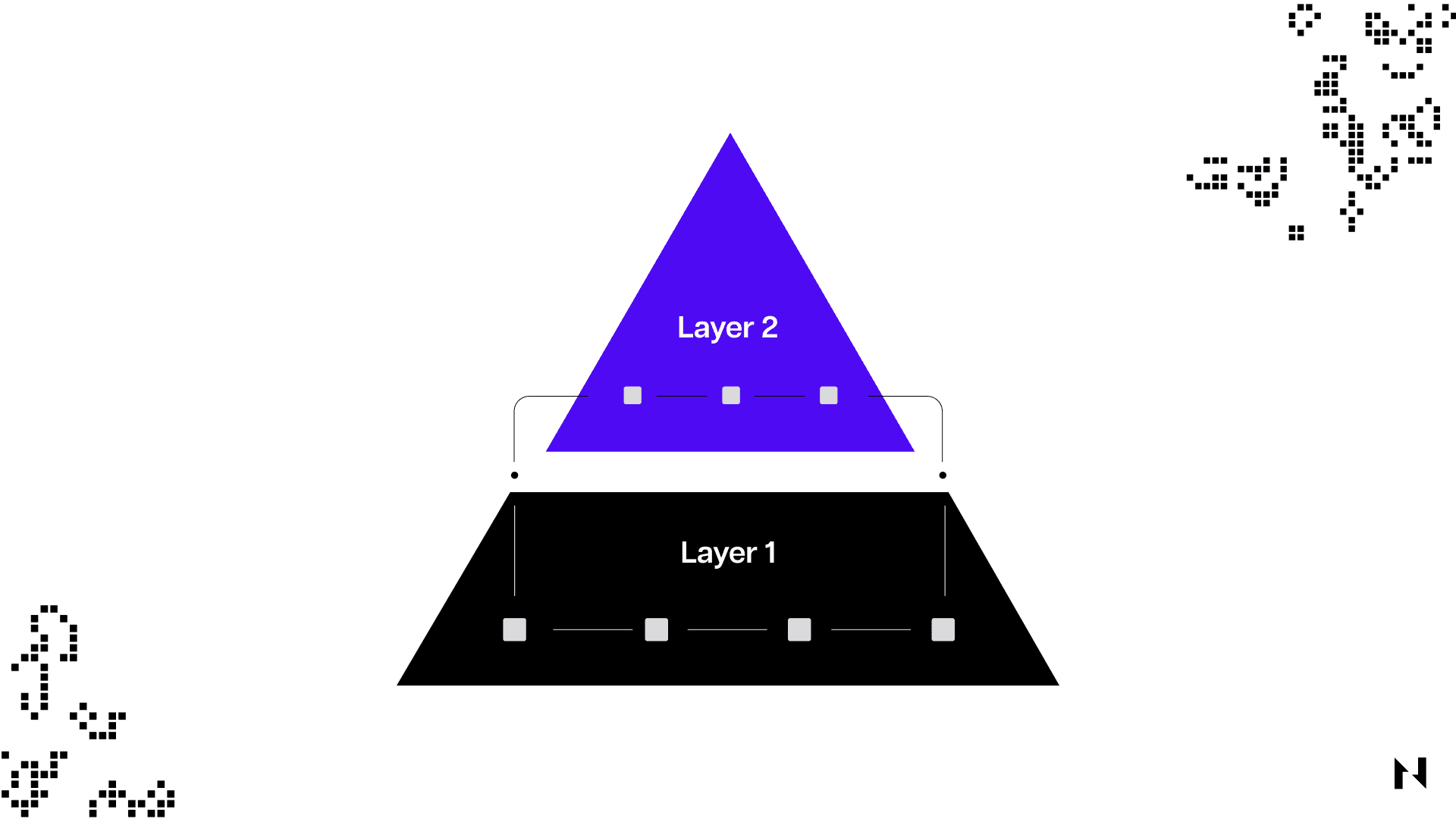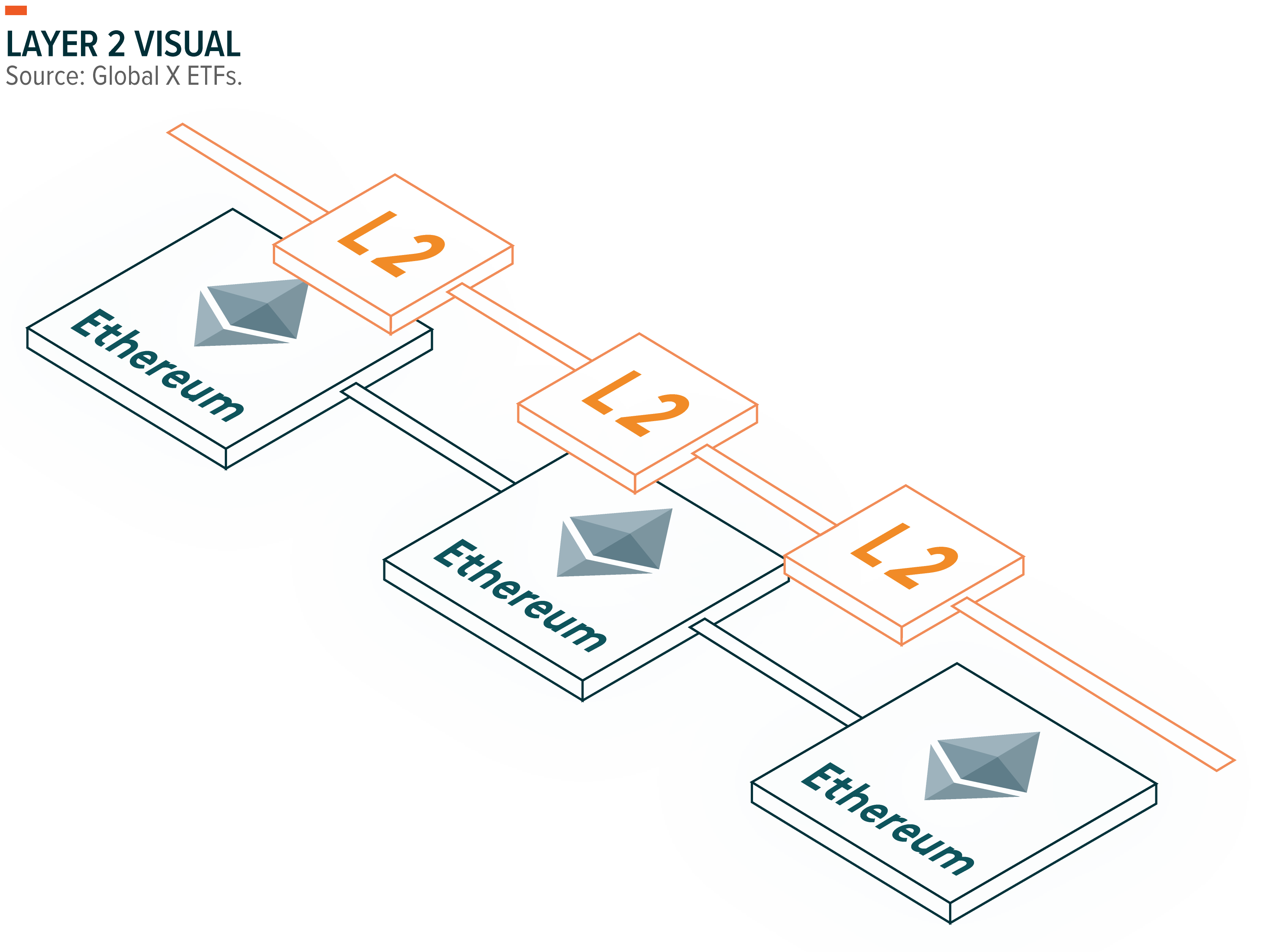Layer 1 vs. Layer 2: The Difference Between Blockchain Scaling Solutions
:max_bytes(150000):strip_icc():format(webp)/what-are-layer-1-and-layer-2-blockchain-scaling-solutions-7104877-final-6a3ee3188cad46d8b3d788588cab5ab0.png)
Layer 1 and Layer 2 blockchain scaling solutions are improvements to the throughput—or processing speed—of any cryptocurrency blockchain network. They can include protocol updates or additional network solutions to help process more transactions.
Layer 1 includes updates such as changing the block size or consensus mechanism, or splitting the database into multiple parts (known as sharding). Layer 2 includes rollups (bundling transactions), parallel blockchains (known as side chains), and off-chain handling of transactions (known as state channels).
KEY TAKEAWAYS
- Layer 1 and Layer 2 crypto blockchain scaling solutions help increase the overall throughput—another name for processing speed—of a blockchain network.
- Layer 1 scaling includes updates to the block size, consensus mechanism, or database partition.
- Layer 2 scaling includes bundling transactions, processing in parallel, or handling transactions off chain.
- Layer 1 and Layer 2 scaling may compromise the security of a blockchain.
Why Layer 1 and Layer 2 Scaling Solutions Are Important
 A blockchain is a decentralized network of nodes that processes crypto transactions independently, with common rules or consensus mechanism to verify the accuracy of the transactions. The transactions are then recorded in sequential order, forming a chain of data blocks that can’t be changed.
A blockchain is a decentralized network of nodes that processes crypto transactions independently, with common rules or consensus mechanism to verify the accuracy of the transactions. The transactions are then recorded in sequential order, forming a chain of data blocks that can’t be changed.
Unfortunately, the more popular a blockchain becomes (Bitcoin is a case in point), the more processing power is needed to handle its growing number of transactions. Cryptocurrency blockchain protocols also may limit the number of transactions that can be processed, creating a bottleneck in the network.
This has caused popular blockchain networks to become very slow, sometimes taking up to 10 minutes (or more) to process a transaction. To solve this issue, scaling activities have been developed to help provide a more efficient means of holding a much larger volume of transactions.
There are several ways to scale each network, and dozens of scaling solutions have been developed for various popular blockchains. These solutions help offload the transaction processing power onto other networks, or improve the base-layer network itself through a code update.
With continued increases in network demand, blockchain networks will rely on scaling solutions such as Layer 1 and Layer 2 to provide stable and efficient transaction handling in the future.
Layer 1 Blockchains vs. Layer 2 Blockchains
 A Layer 1 blockchain is the base architecture for a decentralized cryptocurrency network. Examples of Layer 1 blockchains include Bitcoin, Ethereum, and Cardano. These blockchains handle the processing and security of a cryptocurrency network through a common consensus mechanism, such as proof of work (PoW) or proof of stake (PoS).
A Layer 1 blockchain is the base architecture for a decentralized cryptocurrency network. Examples of Layer 1 blockchains include Bitcoin, Ethereum, and Cardano. These blockchains handle the processing and security of a cryptocurrency network through a common consensus mechanism, such as proof of work (PoW) or proof of stake (PoS).
A Layer 2 blockchain refers to network protocols that are layered on top of a Layer 1 solution. Layer 2 protocols use the Layer 1 blockchain for network and security infrastructure, but are more flexible in their ability to scale transaction processing and overall throughput on the network. Examples are Polygon (which layers on top of Ethereum) and Bitcoin’s Lightning Network.
Coinbase launched Base, its Ethereum Layer 2 network, in August 2023.
Types of Layer 1 Blockchain Scaling Solutions
There are several ways to scale Layer 1 blockchains, including:
Increased Block Size
Some Layer 1 cryptocurrency blockchains have updated their code to increase the block size, allowing more transactions to be verified at a time, thus expanding the overall capacity of the network. An example of this is the Bitcoin Cash (BCH) network, which upgraded its block size to 8 megabytes (MBs) from 1 MB, then further to 32 MBs, allowing it to process more than 100 transactions per second vs. Bitcoin’s seven transactions per second.
Updated Consensus Mechanism
The consensus mechanism of a blockchain is the method by which it validates transactions to ensure the accuracy and security of the network. Bitcoin, for example, uses a proof-of-work (PoW) consensus mechanism, requiring tremendous processing power to solve a complex equation in order to be allowed to record the next block in the blockchain.6
Ethereum also originally used PoW, but has since upgraded to a proof-of-stake (PoS) consensus mechanism, which requires node operators to lock up a large Ether (ETH) deposit to be allowed to process transactions.
Instead of requiring computing power to mine the next block in a crypto blockchain, PoS uses a lottery system to award block recording to stakers, and increases the processing power of the blockchain in return.
Sharding
Sharding is similar to database partitioning, allowing a blockchain database to be broken up into smaller parts so that transactions can be processed simultaneously. This increases the overall capacity of a Layer 1 blockchain network.
Types of Layer 2 Blockchain Scaling Solutions
 There are also several types of Layer 2 blockchain scaling solutions, including:
There are also several types of Layer 2 blockchain scaling solutions, including:
Rollups
Instead of processing transactions individually, bundles of transactions can be “rolled up” into a single transaction, vastly increasing the number of transactions that can be processed at once. The transactions are outsourced to be recorded off chain, bundled, and then brought onto the main chain to process as a single entity.
Side Chains
Side chains are independent blockchain networks with their own set of validators that allow transactions to be processed in parallel. This vastly increases the transaction-processing power of a blockchain, but you must trust the integrity of the side chain network, as well as the bridge network that connects it to the main blockchain.
State Channels
State channels are similar to a side chain, as transactions are recorded off chain, but these transactions are recorded in bulk off chain, then the state of the channel is set at complete. The transactions are then recorded in bulk on the main blockchain network by broadcasting a completed “state” to the main network.
This is how Bitcoin’s Lightning Network is set up.
Risks of Layer 1 and Layer 2 Blockchain Scaling Solutions
While scaling a blockchain is a great way to improve transaction handling and increase overall adoption, there are a few risks inherent to using a scaling solution:
- Blockchain forks: Blockchains are a chain of data blocks that hold a record of all transactions in sequential order. Updating the blockchain to scale may require a fork of that blockchain, which can cause division among the blockchain supporters. Forking the code allows the scaling update to take place, but results in two networks running simultaneously (such as Bitcoin and Bitcoin Cash). This can confuse users and devalue the overall cryptocurrency.
- Harder to verify: Some scaling solutions move transactions to an off-chain network, which means verification doesn’t happen publicly. This lack of transparency may put a blockchain at risk of exposure to bad actors that aim to manipulate the transaction data.
What Is Scalability in Crypto?
Cryptocurrencies operate on a decentralized network, known as the blockchain. There are certain limitations to this style of network, namely the inability to increase the network capacity without code changes or additional solutions. The scalability of a particular cryptocurrency refers to the ability to update the network itself, or Layer 2 solutions that allow transactions to be processed much more quickly.
What’s the Difference Between Layer 1 and Layer 2 Scaling?
Layer 1 scaling solutions are changes to the blockchain network’s base protocol that improve scalability. Layer 2 scaling solutions instead use off-chain services or networks to make scalability better.
What Comes Next After Layer 1 and Layer 2 Scaling?
It will be a slow process for major crypto blockchain networks to improve their scalability. “The most likely option is for Layer 1s to focus on security, and allow Layer 2 networks to tailor their services to specific use cases,” according to Binance Academy, a crypto literacy platform run by the exchange of the same name.
For now, there’s a strong chance that large chains like Ethereum will continue to dominate because they have large user and developer communities. But having an extended, decentralized set of validators and a trusted reputation lends itself to creating targeted Layer 2 solutions.
Binance Academy. “Blockchain Layer 1 vs. Layer 2 Scaling Solutions.”













![[ℕ𝕖𝕧𝕖𝕣] 𝕊𝕖𝕝𝕝 𝕐𝕠𝕦𝕣 𝔹𝕚𝕥𝕔𝕠𝕚𝕟 - OM(G) , My Biggest Bag Was A Scam????](https://cdn.bulbapp.io/frontend/images/99de9393-38a8-4e51-a7ab-a2b2c28785bd/1)


































